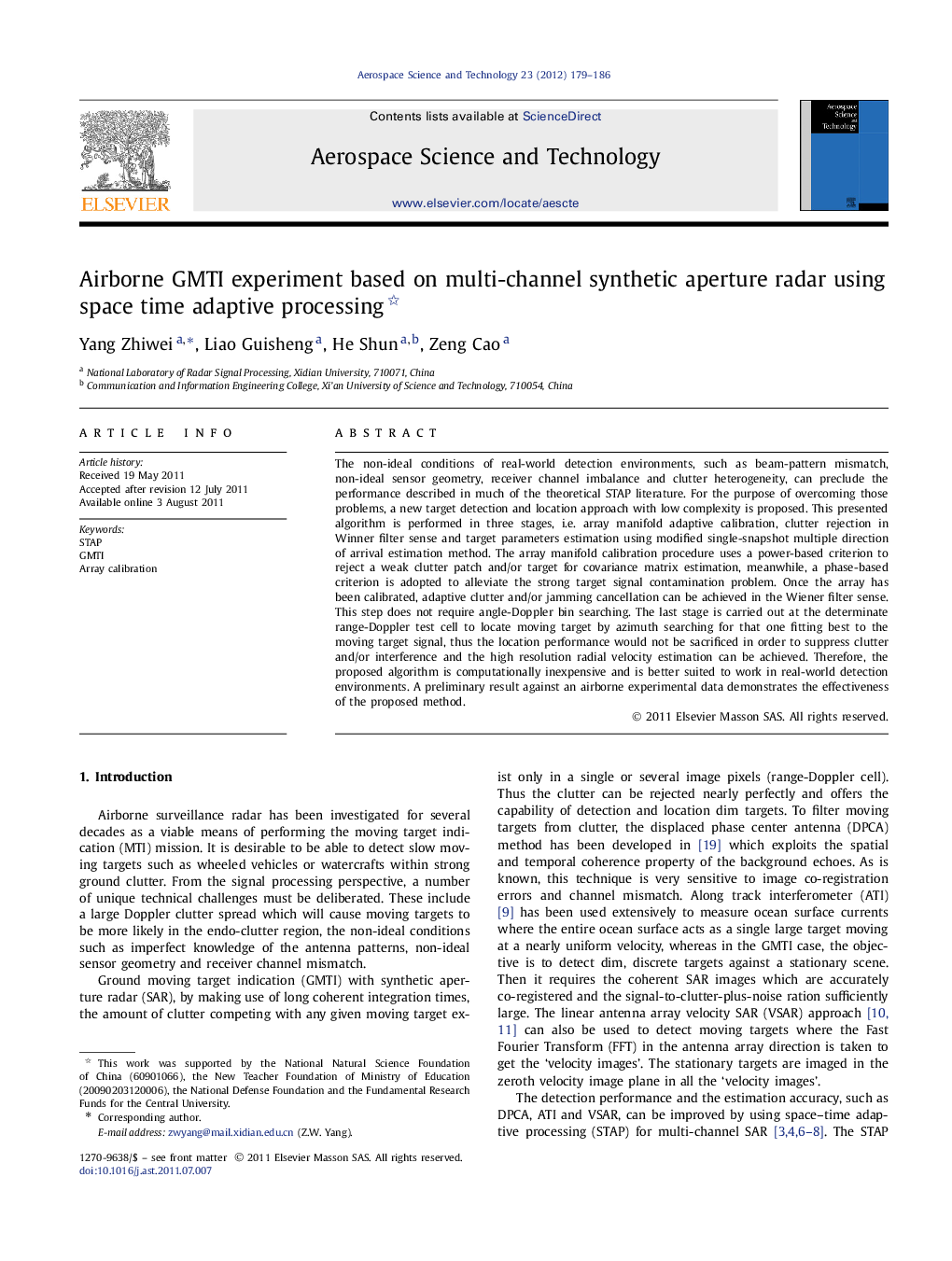| Article ID | Journal | Published Year | Pages | File Type |
|---|---|---|---|---|
| 1718359 | Aerospace Science and Technology | 2012 | 8 Pages |
The non-ideal conditions of real-world detection environments, such as beam-pattern mismatch, non-ideal sensor geometry, receiver channel imbalance and clutter heterogeneity, can preclude the performance described in much of the theoretical STAP literature. For the purpose of overcoming those problems, a new target detection and location approach with low complexity is proposed. This presented algorithm is performed in three stages, i.e. array manifold adaptive calibration, clutter rejection in Winner filter sense and target parameters estimation using modified single-snapshot multiple direction of arrival estimation method. The array manifold calibration procedure uses a power-based criterion to reject a weak clutter patch and/or target for covariance matrix estimation, meanwhile, a phase-based criterion is adopted to alleviate the strong target signal contamination problem. Once the array has been calibrated, adaptive clutter and/or jamming cancellation can be achieved in the Wiener filter sense. This step does not require angle-Doppler bin searching. The last stage is carried out at the determinate range-Doppler test cell to locate moving target by azimuth searching for that one fitting best to the moving target signal, thus the location performance would not be sacrificed in order to suppress clutter and/or interference and the high resolution radial velocity estimation can be achieved. Therefore, the proposed algorithm is computationally inexpensive and is better suited to work in real-world detection environments. A preliminary result against an airborne experimental data demonstrates the effectiveness of the proposed method.
